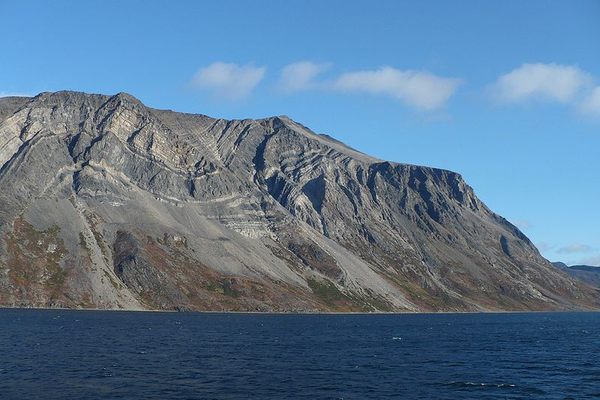Found: Fossil Evidence of the Oldest Life on Earth
It is 3.7 BILLION years old.

The Nuvvuagittuq Supracrustal Belt (perhaps the best-named geological formation out there) is a stretch of rock in the northern part of Quebec, Canada, on the Hudson Bay. The Nuvvuagittuq Supracrustal Belt is some of the oldest sedimentary rock on the planet—it is between 3.7 billion and 4.29 billion years old.
The belt also includes “one of the oldest—if not the oldest—iron formation known on Earth,” as a team of researchers write in a new paper published in Nature. That makes it a promising site to look for traces of some of the earliest life on earth, and here the researchers have found tiny formations that, they report, “represent the oldest life forms recognized on Earth.”
The rocks of the Nuvvuagittuq Supracrustal Belt show signs that they were once part of a deep-sea hydrothermal vent, the type of place where it’s thought life on Earth first emerged. At contemporary hydrothermal vents, the microbes that live there leave behind recognizable signatures. The researchers describe them as “cylindrical casts” that are “formed by bacterial cells and are undeniably biogenic.” In the ancient rock, they went looking for similar structures and found “tubes and filaments” that seemed like they also could have been created by microbes.
Similar ancient structures have been found before, but in previous cases there have been questions about whether the tubes were created by living organisms or through nonorganic geological processes. The researchers conclude that these new discoveries should be attribute to living organisms by considering the structure of the tubes and the context in which they were found.
That means, they write, that “ancient submarine-hydrothermal vent systems should be viewed as potential sites for the origins of life on Earth, thus primary targets in the search for extraterrestrial life.” Research like this isn’t intended just to understand where all living things on earth came from, though; it is also meant to help humans find life on other planets.


















Follow us on Twitter to get the latest on the world's hidden wonders.
Like us on Facebook to get the latest on the world's hidden wonders.
Follow us on Twitter Like us on Facebook